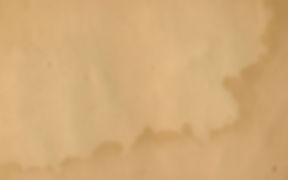
BLACK MOUNTAIN COMPLEX PETROGLYPHS
Recovering Indian history from ancient Native American rock writings.
Limited surveys...distorted context:
For years the author has been grappling with the problem of documented and undocumented evidence verses long held local and scientific opinion about previous archaeological field research conducted adjacent to Black Canyon Road near Barstow, California. To date, only two archaeological surveys of the Black Mountain Complex have been conducted. The first was conducted by volunteers from the Archaeological Survey Association of Southern California, in affiliation with the University of Redlands and sponsorship of the Southwest Museum and later San Bernardino County Museum, as reported by Charley Howe in "A prehistory of Black Canyon, A preliminary view, Occasional Paper #11", Archaeological Survey Association of Southern California, Affiliated with University of Redlands 1980; the second, "The Rock Art of Black Canyon", by Wilson G. Turner, San Bernardino County Museum Association Quarterly, Volume 41, Numbers 1 & 2, Winter & Spring 1994.
The maps from these reports documenting the study areas are presented below:
HOWE 1980 TURNER 1994
Contrary to popular opinion, neither of these two studies included the entire mountain complex, nor the adjacent Opal Mountain complex, without which any archaeological inferences, context(s) and/or conclusions are rendered virtually impossible.
Both Howe and Turner mention limited funding as the reason for the narrow focus of their studies. The problem created by the lack of funding and narrow focus of the studies isn’t the quality of the research, nor data collected by the volunteers of the ASA. It is the misinterpretation (or perception) of the data and subsequent misinformation distributed to the taxpaying public and government agencies responsible for protecting publically owned property, historical and archaeological artifacts that creates the problem. While both men attempted to warn readers against 'jumping to conclusions', many readers often quote conjectures by both men as 'fact'. Several of my acquaintances have pointed out that the same thing (misquotes) happen all the time. Not a big deal, but in this case the supposed unofficial 'experts' have actually caused harm to the area in the form of destruction of archaeological evidence and negative influence upon potential volunteers who might have undertaken field research in the area NOT covered by the two previous studies.
The map below demonstrates, in block form, the two areas of study by Howe (20.7%) and Turner (25.2%), compared to the area of the entire complex (100%):
The area outlined in Black (20.7%) is Charley Howe’s area of survey. The area encompassed by the Red (4.5%) outline is the area surveyed by Wilson Turner’s crew, in addition to the area covered by Howe’s team. Combined, the two studies only represent 25.2 % of the entire complex. What was not surveyed by either study is the area outlined in Blue (74.8%).
Had the two studies encompassed the entire complex, the researchers would have discovered several petroglyph sites within the 'interior' of the complex which complete a recognizable pattern that can be associated with many of the petroglyphs adjacent to Black Canyon Road and Inscription Canyon.
More importantly had ASA been permitted/funded to complete studies on the remaining 75% of the complex they may have discovered the 'scaled' replica, which represents the battlefield used by opposing Native American groups perhaps seven thousand years ago, on the southwest side of the complex.
The battlefield and replica are presented below:
Battlefield and Fronts
Inscription Canyon Replica
The graphic presented above was updated in 2014 to accommodate the actual starting point of the replica which was enigmatic when a public addition of the brief "Native American Religious Site Attacked" (Hunter 2004) was published. The graphic is based upon the pattern produced by plotting individual and clustered petroglyph sub-sites using the glyphs as trail markers.
Trail blazing is not new. Only the application has changed. Instead of blazing a trail, the author merely used the existing markers to track the path established by the ancient Native Americans point-to-point.
The Black Mountain Complex and its battlefield replica is a war memorial, mourning site and classroom complete with written text and amphitheater manufactured for re-enactments of the battle.
The Serrano Indians and Uto-Aztecans have been the traditional caretakers of the Mountain/Complex for five thousand years.





The purpose of this site is to inspire awareness, preservation and research of all rock art/writings. As the site grows and develops, it is hoped that YOU will help in these efforts by submitting questions, comments and suggestions: Our primary means of communication is the 'Contact' button above.
© 2023 by My site name. Proudly created with Wix.com